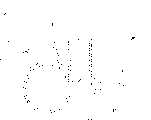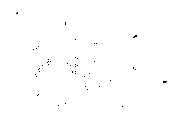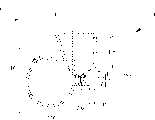CN1314190A - Respiratory drug delivery method and drug delivery device used therefor - Google Patents
Respiratory drug delivery method and drug delivery device used thereforDownload PDFInfo
- Publication number
- CN1314190A CN1314190ACN 01115575CN01115575ACN1314190ACN 1314190 ACN1314190 ACN 1314190ACN 01115575CN01115575CN 01115575CN 01115575 ACN01115575 ACN 01115575ACN 1314190 ACN1314190 ACN 1314190A
- Authority
- CN
- China
- Prior art keywords
- push rod
- medicine
- drug delivery
- groove
- respiratory tract
- Prior art date
- Legal status (The legal status is an assumption and is not a legal conclusion. Google has not performed a legal analysis and makes no representation as to the accuracy of the status listed.)
- Pending
Links
Images
Landscapes
- Medicinal Preparation (AREA)
Abstract
Description
Translated fromChinese本发明涉及一种可连续使用的呼吸道给药方法及其所用给药装置,特别是关于一种利用粉末状的抗生素或噬菌体容易附着于呼吸道粘膜上的特性,以本发明的呼吸道给药装置由鼻或口直接吸入呼吸道中,达到良好功效的呼吸道给药方法及其所用给药装置。The present invention relates to a respiratory tract drug delivery method that can be used continuously and the drug delivery device used therefor, especially about a kind of property that utilizes powdered antibiotics or bacteriophages to easily attach to the mucous membrane of the respiratory tract, and the respiratory tract drug delivery device of the present invention consists of The respiratory tract drug delivery method and the drug delivery device used are directly inhaled into the respiratory tract through the nose or mouth to achieve good efficacy.
一般呼吸道感染疾病对民众来说,实是一种不小的困扰,常见者的如流行性感冒等,都会带给民众许多不便,轻微者,几天即可康复;然而大多数人却必须就医诊治,休息多天才能完全康复,但亦可能有二次感染之危险性存在。甚者,更引起支气管或肺部等更严重的疾病。General respiratory infection is really a big trouble for the public. Common cases such as influenza will bring a lot of inconvenience to the public. Mild cases can recover within a few days; however, most people have to seek medical treatment For diagnosis and treatment, it takes several days of rest to fully recover, but there may also be a risk of secondary infection. What's more, it can cause more serious diseases such as bronchi or lungs.
传统上对病毒引起的呼吸道感染性疾病有严重之疏漏与误解。其实病毒在致病机制上,有时候与细菌有着无法分割的关联性,因此在相关疾病处理上,若是硬将病毒与细菌划分为两个互不相关之物,对于处理过程可能会有严重疏失,造成效果不佳。Traditionally, there have been serious omissions and misunderstandings about respiratory infectious diseases caused by viruses. In fact, viruses sometimes have an inseparable relationship with bacteria in terms of pathogenic mechanism. Therefore, in the treatment of related diseases, if viruses and bacteria are forcibly divided into two unrelated things, there may be serious negligence in the treatment process. , resulting in poor results.
本发明的一个目的是提供一种呼吸道给药方法,利用粉末状抗生素或噬菌体容易附着于呼系道粘膜上的特性,让药剂完全由人体的呼吸道吸收,可对抗呼吸道的细菌进而达到抑制感染的病毒的良好功效。One object of the present invention is to provide a respiratory drug delivery method, which uses the characteristics of powdered antibiotics or bacteriophages that are easy to attach to the mucous membrane of the respiratory tract, so that the medicine can be completely absorbed by the respiratory tract of the human body, which can fight against bacteria in the respiratory tract and achieve the purpose of inhibiting infection Good efficacy of virus.
本发明的另一个目的是提供一种可以将药粉由鼻或口直接吸入呼吸道中,以达到良好功效的上述呼吸道给药方法所用的呼吸道给药装置。Another object of the present invention is to provide a respiratory drug delivery device that can directly inhale the powder into the respiratory tract through the nose or mouth to achieve good efficacy.
本发明的呼吸道给药方法将粉末状药剂通过鼻或口腔的吸气过程直接吸附在人体呼吸道粘膜上,使药剂直接作用于细菌或病毒上,以达到抑制或消灭呼吸道内细菌的效果。In the respiratory tract administration method of the present invention, the powdered medicament is directly adsorbed on the mucous membrane of the human respiratory tract through the inhalation process of the nose or mouth, so that the medicament directly acts on bacteria or viruses to achieve the effect of inhibiting or eliminating bacteria in the respiratory tract.
所述粉末状药剂为噬菌体粉末或抗生素粉末。The powdered medicament is phage powder or antibiotic powder.
本发明所述的呼吸道连续给药装置包括壳体,在壳体的上部设有储药室,储药室内部装有粉末状药剂,此储药室的一旁设有进气口,所述储药室的下方出口处设有推杆槽,推杆槽内设有活动的带有手把的推杆,推杆槽的一端与一药剂混合室相连,此药剂混合室与所述进气口相通,且药剂混合室的一侧还设有一塞鼻部,所述塞鼻部上设有吸药口。The respiratory tract continuous drug delivery device of the present invention comprises a housing, and a medicine storage chamber is arranged on the upper part of the housing, and powdered medicine is housed inside the medicine storage chamber, and an air inlet is provided on the side of the medicine storage chamber, and There is a push rod groove at the lower outlet of the medicine chamber, and a movable push rod with a handle is arranged in the push rod groove. One end of the push rod groove is connected with a medicine mixing chamber, and the medicine mixing chamber is connected with the air inlet. communicate with each other, and one side of the medicine mixing chamber is also provided with a nasal plug, and the nasal plug is provided with a drug suction port.
其中,所述推杆上可在对应储药室的下方出口处设一通槽,通槽的大小可按单位药剂量设计,以作为每次注入药剂量的量测标准;并在所述壳体外侧与推杆手把之间设有弹簧。Wherein, a through groove can be set on the push rod at the lower outlet corresponding to the drug storage chamber, and the size of the through groove can be designed according to the unit dose of medicine, as a measurement standard for each injected medicine dose; A spring is arranged between the outer side and the push rod handle.
所述推杆还可以设计为在推杆的两侧设有条形凹槽,并在与之对应的推杆槽的内壁口上设有卡榫,该卡榫可嵌入条形凹槽内,以控制推杆的推拉位置。The push rod can also be designed to be provided with a bar-shaped groove on both sides of the push rod, and a tenon is provided on the inner wall of the corresponding push rod groove, and the tenon can be embedded in the bar-shaped groove to Control the push and pull position of the push rod.
所述推杆还可以设计为在手把上设有齿纹,在对应储药室的下方出口处的推杆上设有螺纹,通过旋转推杆,控制推杆的进出位置。The push rod can also be designed such that tooth patterns are provided on the handle, and threads are provided on the push rod corresponding to the lower outlet of the medicine storage chamber, and the in-and-out position of the push rod is controlled by rotating the push rod.
所述塞鼻部可呈椭圆球状或似椭圆球状。The nasal plug can be in the shape of an ellipse or a quasi-ellipse.
所述进气口的截面积在靠近与药剂混合室的相接处缩小。The cross-sectional area of the air inlet decreases near the junction with the medicament mixing chamber.
所述推杆槽可为空心圆柱状。The push rod groove can be hollow cylindrical.
本发明的呼吸道给药装置可为透明树脂材质。The respiratory drug delivery device of the present invention can be made of transparent resin.
当储药室加入粉末状药剂时,先使药剂落入取药部(所述通槽、推杆槽或推杆上螺纹间隙处),推动推杆,药剂因而掉入药剂混合室底部。将该塞鼻部塞入鼻孔并吸气,吸入的气体在药剂混合室内产生气旋使药剂受搅动而与空气混合,经过吸药孔被吸入鼻孔内,从而进入人体呼吸道粘膜并附着住,以达到抑制或消灭呼吸道内细菌的效果。When adding powdered medicament to the medicine storage chamber, first make the medicine fall into the medicine taking part (the said through groove, the push rod groove or the thread gap on the push rod), and push the push rod, so that the medicine will fall into the bottom of the medicine mixing chamber. Put the nasal plug into the nostril and inhale, the inhaled gas will generate a cyclone in the medicine mixing chamber to stir the medicine and mix it with the air, and be sucked into the nostril through the medicine suction hole, so as to enter the human respiratory tract mucosa and adhere to it, so as to achieve Inhibit or eliminate the effect of bacteria in the respiratory tract.
本发明的呼吸道给药方法舍弃了传统的给药方式,采用独创的呼吸道给药装置,实验结果相当令人满意,能够产生极大的功效,即抗生素不仅能对抗细菌且有抑制流感病毒的结果,使流行性感冒在短期内即有显著的成效;且可连续使用,可将药剂完全由人体之呼吸道吸收,达到抑制呼吸道之细菌,进而抑制感染之病毒之良好功效。然为何抑制或消灭呼吸道的细菌即可抑制流感病毒的发作,此点似与目前所知或有不同,但实验结果却是正面的。究其原因,可能有以下两大因素:The respiratory drug delivery method of the present invention abandons the traditional drug delivery method and adopts an original respiratory drug delivery device. The experimental results are quite satisfactory and can produce great efficacy, that is, antibiotics can not only fight bacteria but also inhibit influenza virus. , so that the influenza will have a significant effect in a short period of time; and it can be used continuously, and the medicine can be completely absorbed by the human respiratory tract, so as to inhibit the bacteria in the respiratory tract, and then inhibit the virus of infection. However, why inhibiting or eliminating bacteria in the respiratory tract can inhibit the outbreak of influenza virus may be different from the current knowledge, but the experimental results are positive. The reason may be due to the following two factors:
(1)以免疫学理论来说,流行性感冒病毒首先粘附于人体呼吸道上的粘膜组织,当侵入粘膜细胞后即行复制,同时亦使粘膜组织受创产生伤口。紧接着细菌入侵伤口,从而引起人体的发炎反应(inflammatoryresponse)。此时,伤口附近的血管就会扩张,并增加组织间的通透性,造成大量的体液流向伤口部位,而多种的白血球细胞亦移向伤口。其中,吞噬细胞会从血管壁渗入组织中进而吞噬入侵的细菌。其中肝脏所分泌的一种急性蛋白(acute-phase protein)-C反应蛋白(C-reactive protein)可与细菌细胞壁的C-多醣体(C-polysaccharide)结合,而活化人体的补体系统(complement system),补体(complement)除可溶解细菌的细胞壁外,亦可同时加速吞噬细菌的效果。而当巨噬细胞(Macrophage)吞噬细菌时,细菌会因酸性环境而被分解成众多小碎片,其中的部分小碎片(亦即肽类,peptides)会与Class□□ MHC (Maior Histocompatibility complex)结合成一复合体。此时巨噬细胞会分泌一种蛋白质,称作介白质(Interleukin)IL-I,以活化T细胞中的帮助者细胞TH,此IL-I亦会影响视丘下部(hypothalamus)的体温调节中枢,而导致人体感冒发烧的现象。TH细胞上的抗原接受器(TCR)与所述抗原-Class□□MHC复合体结合,TH并分泌IL-2、IL-4、IL-5、IL-6及干扰素IFN-r以刺激并活化B细胞,产生浆细胞(plasma cell)以制造抗体。然而此时所产生的抗体,因为针对细菌者,故无法对抗流行性感冒病毒。换句话说,所述的流行性感冒病毒在粘膜制造伤口使人体免疫系统倾全力对抗细菌的入侵,而使得细菌处在免疫反应的最前线,如此一来,反而让躲在粘膜细胞后的病毒退居第二线,而趁机肆无忌惮地大量复制。(1) From the perspective of immunology, the influenza virus first adheres to the mucosal tissue on the human respiratory tract, and then replicates after invading the mucosal cells, and at the same time causes wounds to the mucosal tissue. Immediately afterwards, bacteria invade the wound, causing the body's inflammatory response (inflammatory response). At this time, the blood vessels near the wound will expand and increase the permeability between tissues, causing a large amount of body fluid to flow to the wound site, and various white blood cells will also move to the wound. Among them, phagocytes infiltrate the tissue from the blood vessel wall and engulf invading bacteria. Among them, an acute-phase protein (acute-phase protein) - C-reactive protein (C-reactive protein) secreted by the liver can combine with the C-polysaccharide (C-polysaccharide) of the bacterial cell wall to activate the human body's complement system (complement system) ), complement (complement) can not only dissolve the cell wall of bacteria, but also accelerate the effect of phagocytosis of bacteria. When macrophages (Macrophage) engulf bacteria, the bacteria will be decomposed into many small fragments due to the acidic environment, and some of the small fragments (that is, peptides, peptides) will combine with Class□□ MHC (Maior Histocompatibility complex) into a complex. At this time, macrophages will secrete a protein called interleukin (Interleukin) IL-I to activate the helper cellTH in T cells, and this IL-I will also affect the temperature regulation of the hypothalamus central, which causes the human body to catch a cold and have a fever. Antigen receptor (TCR) on TH cell is combined with described antigen-Class □ MHC complex, and TH secretes IL-2, IL-4, IL-5, IL-6 and interferon IFN-r to Stimulate and activate B cells to produce plasma cells to produce antibodies. However, the antibodies produced at this time cannot fight against influenza virus because they are against bacteria. In other words, the influenza virus creates wounds in the mucous membranes so that the body's immune system can fully resist the invasion of bacteria, so that the bacteria are at the forefront of the immune response, so that the virus hiding behind the mucosal cells Relegated to the second line, and took the opportunity to copy a large number of unscrupulous.
(2)流行性感冒病毒为具有套膜(Envelope)的病毒,故对环境因素极为敏感。为了能在人体内生存就像HIV病毒一样会大量夺取人体内细胞表面的蛋白质(即classⅠMHC及classⅡMHC),除用以加厚套膜以免遭人体补体系统之MAC(membrane-attack complex)溶解外,并可使同样拥有classⅡ MHC之吞蚀噬细胞因此而无法将其辨认出来而无法将其吞噬。因此有些具有套膜的病毒如流感病毒,疱疹病毒便会借着破坏人体组织产生伤口,使人体的吞噬细胞因吞噬大量的细菌而产生大量的classⅡ MHC分子,当受感染细胞外表面的classⅡ MHC足够时,病毒便进行芽生(Budding)繁殖,以确保每个新的病毒拥有足够的classⅡ MHC,以保护病毒能生存于人体内。因此若在病毒制造出伤口时,立刻进行灭菌工作,使伤口处的吞噬细胞不致因吞噬细菌而产生大量的classⅡ MHC,流感病毒无法复制classⅡ MHC,也就无法进行大量复制,受感染的细胞终遭毒杀细胞CTL(cytotoxic T Lymphocyte)溶解杀死,进而使得流感病毒受到控制,并迅速痊愈。(2) Influenza virus is a virus with an envelope (Envelope), so it is extremely sensitive to environmental factors. In order to survive in the human body, just like the HIV virus, it will take a large number of proteins on the surface of the cells in the human body (namely class I MHC and class II MHC). In addition to thickening the mantle to avoid dissolution by the MAC (membrane-attack complex) of the human complement system, And it can make the phagocytic phagocytes that also have class II MHC unable to recognize it and engulf it. Therefore, some viruses with envelopes, such as influenza virus and herpes virus, will create wounds by destroying human tissues, causing human phagocytes to produce a large number of class II MHC molecules due to the engulfment of a large number of bacteria. When the class II MHC molecules on the outer surface of the infected cells When enough, the virus will reproduce by budding to ensure that each new virus has enough class II MHC to protect the virus from living in the human body. Therefore, if the wound is sterilized immediately when the virus creates a wound, the phagocytes at the wound will not produce a large amount of class II MHC due to the phagocytosis of bacteria, and the influenza virus cannot replicate class II MHC, so it cannot replicate in large quantities, and the infected cells Finally, it is dissolved and killed by cytotoxic T Lymphocyte (CTL), which makes the influenza virus under control and recovers quickly.
由上述分析可知流感病毒的发作与细菌理应是息息相关的。From the above analysis, it can be seen that the outbreak of influenza virus is closely related to bacteria.
本发明的呼吸道给药方法及其所用给药装置,即将该呼吸道给药装置塞入鼻孔并吸气,空气由进气孔经压缩后进入药剂混合室内发生气体回旋现象,使粉末状药剂混合空气,经过吸药孔一起被吸入鼻孔内,而进入人体呼吸道附着于粘膜。如此,本发明呼吸道给药装置应用于人体吸收呼吸道药剂的方法,可直接让粉末状药剂进入人体附于呼吸道粘膜,可消灭或抑制呼吸道中的细菌,有效消除细菌趁机危害人体呼吸器官,并可进一步抑制病毒复制而大幅提升药剂的使用成效。又,本发明的呼吸道给药装置为一透明之树脂材质,可供看清粉末状药剂之供给情形,另外,本发明的呼吸道给药装置可提供连续数次使用,更因携带方便,有利于患者的使用。The respiratory drug delivery method of the present invention and the drug delivery device used therefor are to insert the respiratory drug delivery device into the nostril and inhale, the air enters the medicine mixing chamber after being compressed through the air intake hole, and the gas whirl phenomenon occurs, so that the powdered medicine is mixed with air. , are sucked into the nostrils together through the suction hole, and enter the human respiratory tract and attach to the mucous membrane. In this way, the respiratory drug delivery device of the present invention is applied to the method for the human body to absorb respiratory medicine, which can directly allow the powdered medicine to enter the human body and attach to the mucous membrane of the respiratory tract, which can eliminate or inhibit the bacteria in the respiratory tract, effectively eliminate the bacteria that take the opportunity to harm the human respiratory organs, and can Further inhibit virus replication and greatly improve the efficacy of the drug. Moreover, the respiratory drug delivery device of the present invention is made of a transparent resin material, which can be used to see the supply of powdered medicine. In addition, the respiratory drug delivery device of the present invention can be used several times in a row, and it is convenient to carry, which is beneficial patient use.
当然,本发明之呼吸道给药装置并不限制于塞入鼻孔使用,亦可操作由人体口部塞入呼吸道给药装置的塞鼻部,而成功吸入该粉末状药剂。再者,本发明的呼吸道给药装置可广泛应用于任何呼吸系统的病毒性疾病的给药方法,尤其是会造成呼吸系统损害的突变种或罕见的新型病毒,在人体内丝毫没有抗体的病毒性疾病,本发明的呼吸道给药装置可提供最佳的给药方法。Certainly, the respiratory drug delivery device of the present invention is not limited to being inserted into the nostrils, and can also be inserted into the nasal plug of the respiratory drug delivery device from the mouth of the human body to successfully inhale the powdered medicine. Furthermore, the respiratory drug delivery device of the present invention can be widely used in the drug delivery method of any viral disease of the respiratory system, especially mutants or rare new viruses that can cause damage to the respiratory system, and viruses that have no antibodies in the human body Diseases, the respiratory drug delivery device of the present invention can provide the best drug delivery method.
本发明的方法使在流行性感冒初期使人体免疫系统不需全力对抗细菌,让病毒直接暴露在免疫系统战的第一线,如此,巨噬细胞可倾全力对抗吞噬流行性感冒病毒,并使浆细胞产生以流行性感冒病毒为抗原之抗体;再加上述的人体补体系统反应,除了可以溶解病毒胞膜(envelop)以杀死病毒外,更可充分发挥调理作用(Opsonization)提高吞噬病毒的效果及速率。The method of the present invention makes the human immune system not need to fight bacteria with all its strength at the initial stage of influenza, and allows the virus to be directly exposed to the front line of the immune system battle, so that macrophages can fight against phagocytosis influenza virus with all their strength, and make Plasma cells produce antibodies with influenza virus as the antigen; coupled with the above-mentioned human complement system response, in addition to dissolving the virus envelope (envelop) to kill the virus, it can also fully exert opsonization to increase the ability of the virus to phagocytize effect and speed.
下面结合附图和实施例进一步描述本发明。The present invention will be further described below in conjunction with the accompanying drawings and embodiments.
图一为本发明第一实施例中所述注入粉末状药剂于取药部(通槽)时的示意图。FIG. 1 is a schematic diagram of injecting powdered medicine into the medicine taking part (through slot) according to the first embodiment of the present invention.
图二为本发明第一实施例中所述送入推杆注入粉末状药剂于药剂混合室的示意图。FIG. 2 is a schematic diagram of the feeding push rod injecting powdered medicine into the medicine mixing chamber according to the first embodiment of the present invention.
图三为本发明第一实施例的呼吸道给药装置的立体示意图。FIG. 3 is a three-dimensional schematic view of the respiratory drug delivery device according to the first embodiment of the present invention.
图四为本发明第二实施例中所述注入粉末状药剂于取药部(推杆槽前部)时的示意图。FIG. 4 is a schematic diagram of injecting powdered medicine into the medicine taking part (the front part of the push rod groove) according to the second embodiment of the present invention.
图五为本发明第二实施例中所述送入推杆注入粉末状药剂于药剂混合室的示意图。FIG. 5 is a schematic diagram of the feeding push rod injecting powdered medicine into the medicine mixing chamber according to the second embodiment of the present invention.
图六为本发明第二实施例的呼吸道给药装置的立体示意图。FIG. 6 is a schematic perspective view of a respiratory drug delivery device according to a second embodiment of the present invention.
图七为本发明第三实施例的呼吸道给药装置的示意图。其中,图中标号:1,2-给药装置FIG. 7 is a schematic diagram of a respiratory drug delivery device according to a third embodiment of the present invention. Wherein, the label in the figure: 1,2-medication device
5,115-吸药孔 5,115-Drug suction hole
10,1110-塞鼻部
15,1115-药剂混合室
20-通槽
20a-螺纹间隙
25,1125-储药室 25, 1125-Pharmacy Room
35,1135-手把 35,1135-handle
35a-螺孔
35b-手把齿纹
40,1140-推杆 40, 1140-push rod
40a-弹簧
40b-螺纹
45,1145-进气口 45,1145-air intake
100,11100-粉末状药剂 100, 11100-Powder medicine
1120-推杆槽
1122-卡榫
1142-推杆上条形凹槽
第一实施例first embodiment
如图一所示的本发明第一实施例的呼吸道给药装置的示意图。所述的呼吸道给药装置1可采用透明树脂为材质,其主要包含有一储药室25、一推杆40、一进气口45、一药剂混合室15以及一塞鼻部10。储药室25内部可装有任何粉末状药剂100。该推杆40的前部有一手把35,其上可带有弹簧40a的设计。其中手把35上可有一螺纹35a,当使推杆40加入弹簧40a时,再锁上该螺纹35a,使之锁住,或是用胶合使手把35与推杆40固定住;而推杆40的后部则可设有一中空开口状的通槽20。该药剂混合室15的前端则可与一椭圆球状或似圆球状的塞鼻部10相结合而使之固定住,而塞鼻部10的最前端设有开口状的吸药孔5;而药剂混合室15旁设有一进气口45,该进气孔45的一端为一开口,而进气孔45底部设计为具有缩口者,以使该进气口45可引进空气,而当空气进入时会在底部造成空气压缩现象。图一显示为所述呼吸道给药装置1注入粉末状药剂100于通槽20时的示意图。其中,当使储药室25的粉末状药剂100落入通槽20,且通槽20的大小可设计为一单位药剂量,以作为每次注入药剂量的量测标准。FIG. 1 is a schematic diagram of the respiratory drug delivery device according to the first embodiment of the present invention. The airway
如图二所示,系为呼吸道给药装置1推入推杆注入粉末状药剂100于药剂混合室15的示意图。其中,以手把35将推杆40推入,此时推杆40上所带的弹簧40a呈现压缩状态,位于通槽20的粉末状药剂100因而掉入药剂混合室15。而当手把35松手时,推杆40上所带的弹簧40a的恢复力使得推杆40恢复至原图一位置状态。As shown in FIG. 2 , it is a schematic diagram of injecting
本实施例的呼吸道给药方法是:将该呼吸道给药装置1的塞鼻部10塞入鼻孔并吸气,此时空气由进气口45进入药剂混合室15内,受压缩的空气会发生气体回旋现象,将粉末状药剂100搅动并与空气混合,经过吸药孔5一起被吸入鼻孔内,进入人体呼吸道被粘膜附着住。如此,将该呼吸道给药装置1应用于人体吸收呼吸道药剂的方法即可完成。The respiratory drug delivery method of the present embodiment is: insert the
如图三所示的呼吸道给药装置1的立体示意图。其中该推杆40带有一手把35以利推杆40的推拉使用,推杆40上还覆有一弹簧40a,使得在推入推杆40时,此推杆40上所附之弹簧40a呈现压缩状态,而注入的药剂量即为通槽20的大小(亦即一单位药剂量),粉末状药剂100因而掉入药剂混合室15依所需进行空气混合。而当手把35松手时,推杆40上所附之弹簧40a的恢复力使得推杆40恢复至原位置状态;且因推杆40的出口口径较推杆40之后部为小,因此推杆40不置于落脱,以利在作推拉动作更加稳定及流畅。推杆40将粉末状药剂100推入药剂混合室15时,当塞鼻部10塞入鼻孔吸气时,空气仅可以经过进气口45进入。FIG. 3 is a three-dimensional schematic diagram of the respiratory
第二实施例second embodiment
如图四所示,所述的呼吸道给药装置2也可采用透明树脂为材质,其主要包含有一储药室1125、一推杆1140、一进气口1145、一药剂混合室1115以及一塞鼻部1110。其内部可装有任何粉末状药剂11100。该推杆1140的前部有一手把1135。该药剂混合室1115的前端则可与一椭圆球状或似圆球状的塞鼻部1110相结合而使之固定住,而塞鼻部1110的最前端设有开口状的吸药孔115;而药剂混合室15旁设有一进气口1145,该进气孔1145的一端为一开口,而进气孔1145底部设计为具有缩口者,以使该进气口1145可引进空气,而当空气进入时会在底部造成空气压缩现象。图一显示为所述呼吸道给药装置2注入粉末状药剂11100于推杆槽1120时的示意图。其中,当使得储药室1125的粉末状药剂11100落入推杆槽1120。As shown in Figure 4, the respiratory
如图五所示的呼吸道给药装置2送入推杆注入粉末状药剂11100于药剂混合室1115的示意图。其中,以手把1135将推杆1140送入,粉末状药剂11100因而掉入药剂混合室1115依所需进行空气混合。As shown in FIG. 5 , the airway
本实施例的呼吸道给药方法是:将该呼吸道给药装置2的塞鼻部1110塞入鼻孔并吸气,此时空气由进气口1145进入药剂混合室1115内,受压缩的空气会发生气体回旋现象,将粉末状药剂11100与空气混合,经过吸药孔115一起被吸入鼻孔内,而进入人体呼吸道被粘膜附着住。如此,将该呼吸道给药装置2应用于人体吸收呼吸道药剂的方法即可完成。The respiratory drug delivery method of the present embodiment is: insert the
如图六所示的呼吸道给药装置2的立体示意图。其中该推杆1140附有一手把1135以利推杆1140的推拉使用,且推杆1140两旁各设有推杆条形凹槽1142,该推杆条形凹槽1142的长度为整个推杆1140的1/2~2/3长,以及该推杆槽1120的两旁各设有一卡榫1122。该推杆1140的推杆条形凹槽1142可嵌入于该推杆槽1120的卡榫1122内,而使得在拉出推杆1140时,推杆1140因卡榫1122而不会掉出,以利在作推拉动作更加稳定及流畅。推杆1140将粉末状药剂11100推入药剂混合室1115时,当塞鼻部1110塞入鼻孔吸气时,空气仅可以经过进气口1145进入。A three-dimensional schematic view of the respiratory
第三实施例third embodiment
如图七所示,同样的,呼吸道给药装置1亦主要包含有一储药室25、一推杆40、一进气口45、一药剂混合室15以及一塞鼻部10。然而与前述实施例不同的是,本实施例之特征在于推杆40之槽为空心圆柱状,该推杆40的前部有一手把齿纹35b的设计,而该推杆40接近药剂混合室15的部分有螺纹40b的设计。其中,当以手把齿纹35b将推杆40旋推入,粉末状药剂100掉入推杆40上所附之螺纹40b的螺纹间隙20a,因而跟着推杆40的前进而落入药剂混合室15内。再经过吸药孔5一起被吸入鼻孔内,而进入人体呼吸道被粘膜附着住。As shown in FIG. 7 , similarly, the respiratory
当然,以上所述仅为本发明的呼吸道给药方法及其所用给药装置的较佳实施例,并非用以限制本发明的实施范围,任何熟习该项技艺者在不违背本发明的精神所做的修改,均应属于本发明之范围。Of course, the above description is only a preferred embodiment of the respiratory drug delivery method of the present invention and the drug delivery device used therein, and is not intended to limit the scope of the present invention. All modifications made should belong to the scope of the present invention.
Claims (10)
Priority Applications (1)
| Application Number | Priority Date | Filing Date | Title |
|---|---|---|---|
| CN 01115575CN1314190A (en) | 2001-04-29 | 2001-04-29 | Respiratory drug delivery method and drug delivery device used therefor |
Applications Claiming Priority (1)
| Application Number | Priority Date | Filing Date | Title |
|---|---|---|---|
| CN 01115575CN1314190A (en) | 2001-04-29 | 2001-04-29 | Respiratory drug delivery method and drug delivery device used therefor |
Publications (1)
| Publication Number | Publication Date |
|---|---|
| CN1314190Atrue CN1314190A (en) | 2001-09-26 |
Family
ID=4662071
Family Applications (1)
| Application Number | Title | Priority Date | Filing Date |
|---|---|---|---|
| CN 01115575PendingCN1314190A (en) | 2001-04-29 | 2001-04-29 | Respiratory drug delivery method and drug delivery device used therefor |
Country Status (1)
| Country | Link |
|---|---|
| CN (1) | CN1314190A (en) |
Cited By (2)
| Publication number | Priority date | Publication date | Assignee | Title |
|---|---|---|---|---|
| CN109172963A (en)* | 2018-10-19 | 2019-01-11 | 杭州光启医疗科技发展有限公司 | Atomization physical therapy equipment with successive administration function |
| CN115089825A (en)* | 2022-07-06 | 2022-09-23 | 苏州易合医药有限公司 | Lung drug delivery device |
- 2001
- 2001-04-29CNCN 01115575patent/CN1314190A/enactivePending
Cited By (2)
| Publication number | Priority date | Publication date | Assignee | Title |
|---|---|---|---|---|
| CN109172963A (en)* | 2018-10-19 | 2019-01-11 | 杭州光启医疗科技发展有限公司 | Atomization physical therapy equipment with successive administration function |
| CN115089825A (en)* | 2022-07-06 | 2022-09-23 | 苏州易合医药有限公司 | Lung drug delivery device |
Similar Documents
| Publication | Publication Date | Title |
|---|---|---|
| CN102264421B (en) | Method for aerosol drug delivery and device including stepped mouthpiece | |
| KR100998394B1 (en) | Inhaler for better performance | |
| EP0574038B1 (en) | Medication delivery apparatus | |
| US5669378A (en) | Inhaling device | |
| CN113329779B (en) | dry powder inhaler | |
| CZ296319B6 (en) | Method of dispersing active substance and inhalation device for making the same | |
| JP2002512092A (en) | Improved dosing device and improved dosing method | |
| US20080196716A1 (en) | Mouthpiece and Flow Rate Controller for Intrapulmonary Delivery Devices | |
| CN1524588A (en) | Medicated inhalers and inhalation | |
| JPH02243164A (en) | Medicine supply system | |
| WO2001051030A1 (en) | Pharmaceutical formulation and method for pulmonary and oral delivery | |
| AU2003303914B2 (en) | Methods, devices and formulations for targeted endobronchial therapy | |
| IT202000005026A1 (en) | Lactoferrin for inhalation use with antiviral action | |
| US6537265B2 (en) | Method for nasal application of a medicinal substance | |
| CN1314190A (en) | Respiratory drug delivery method and drug delivery device used therefor | |
| CN111388492B (en) | Use of Jasurolignoside in the preparation of a medicament for the treatment and/or prevention of lung injury | |
| CN112969490B (en) | Device for administering a drug to a mechanically assisted respiratory patient | |
| US20020179086A1 (en) | Method of medicine administration for respiratory tract | |
| CN213432066U (en) | Medicine feeder for combined traditional Chinese and western medicine internal medicine | |
| CN204890849U (en) | A sliding multi-capsule dry powder inhalation device | |
| WO2022236599A1 (en) | Use of hyaluronic acid for preparing medicament for treating acute respiratory distress syndrome | |
| US20130123364A1 (en) | N6-(1-iminoethyl)-l-lysine for regeneration of alveoli in lungs | |
| US20240277950A1 (en) | Reliable compact inhalation device for asthma and chronic obstructive pulmonary disease | |
| CN221655470U (en) | Paranasal sinus drug delivery device | |
| JP6818924B1 (en) | Method for improving nontuberculous mycobacteriosis using slaked lime |
Legal Events
| Date | Code | Title | Description |
|---|---|---|---|
| C06 | Publication | ||
| PB01 | Publication | ||
| C10 | Entry into substantive examination | ||
| SE01 | Entry into force of request for substantive examination | ||
| C02 | Deemed withdrawal of patent application after publication (patent law 2001) | ||
| WD01 | Invention patent application deemed withdrawn after publication |




